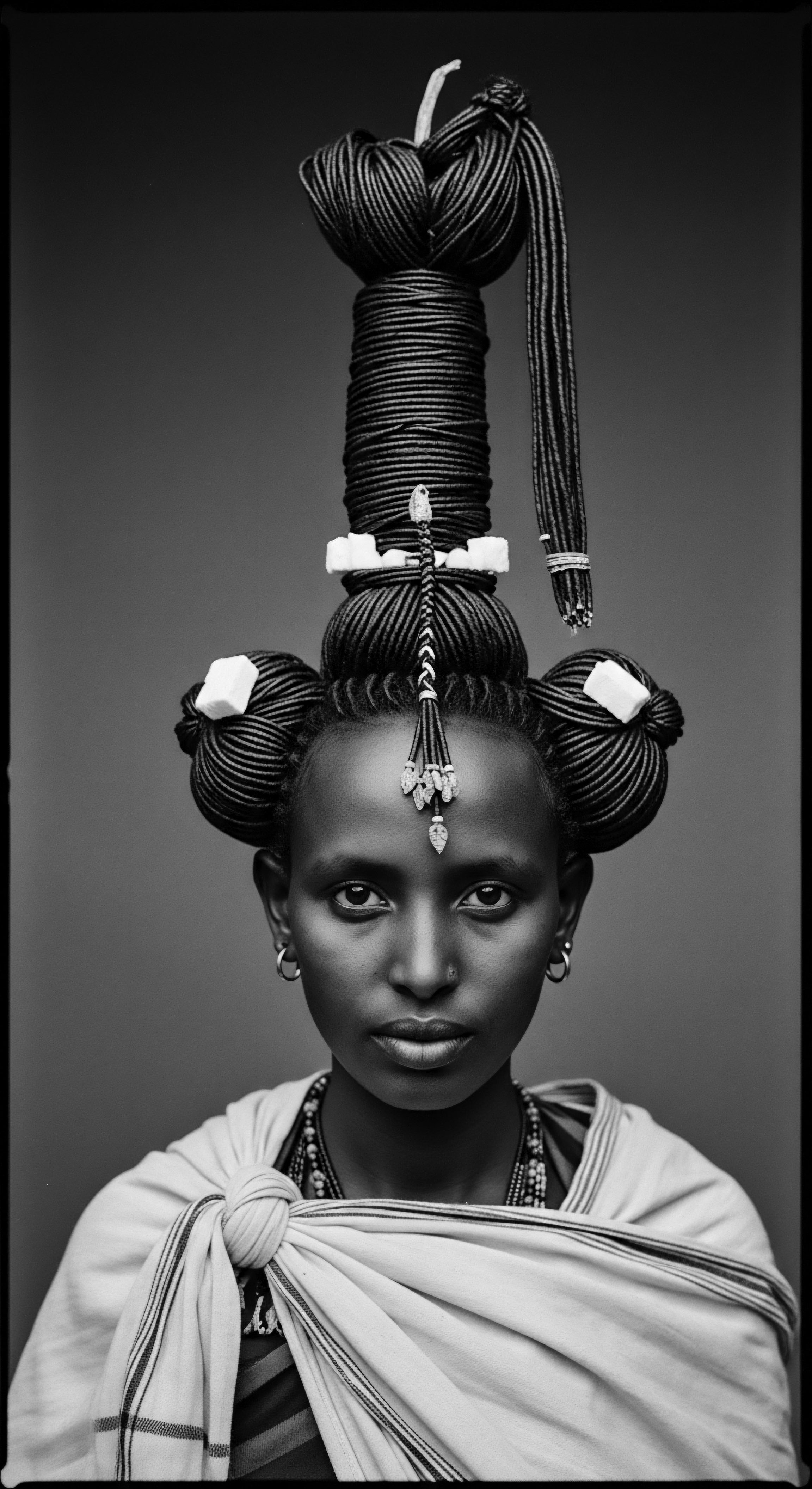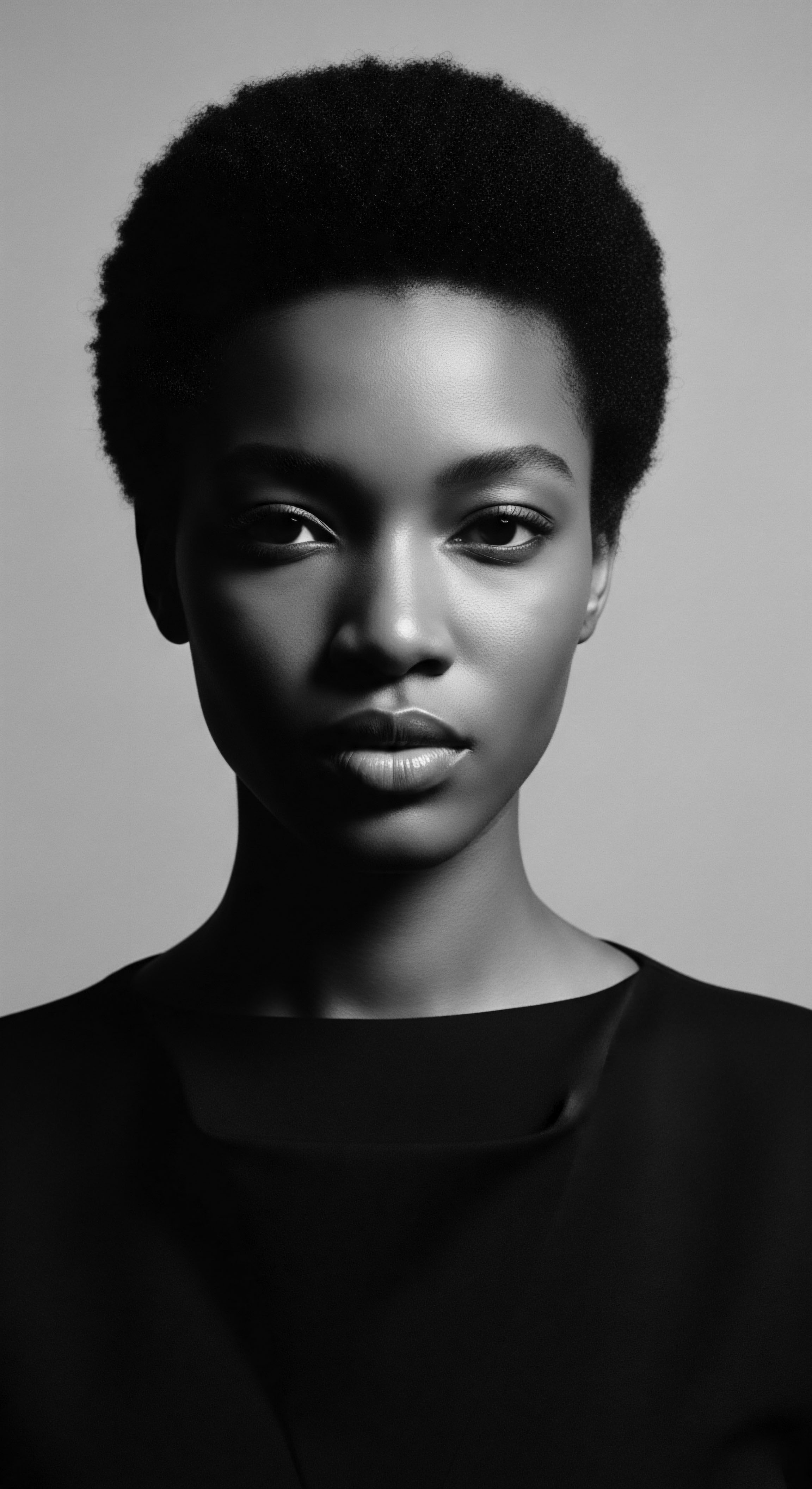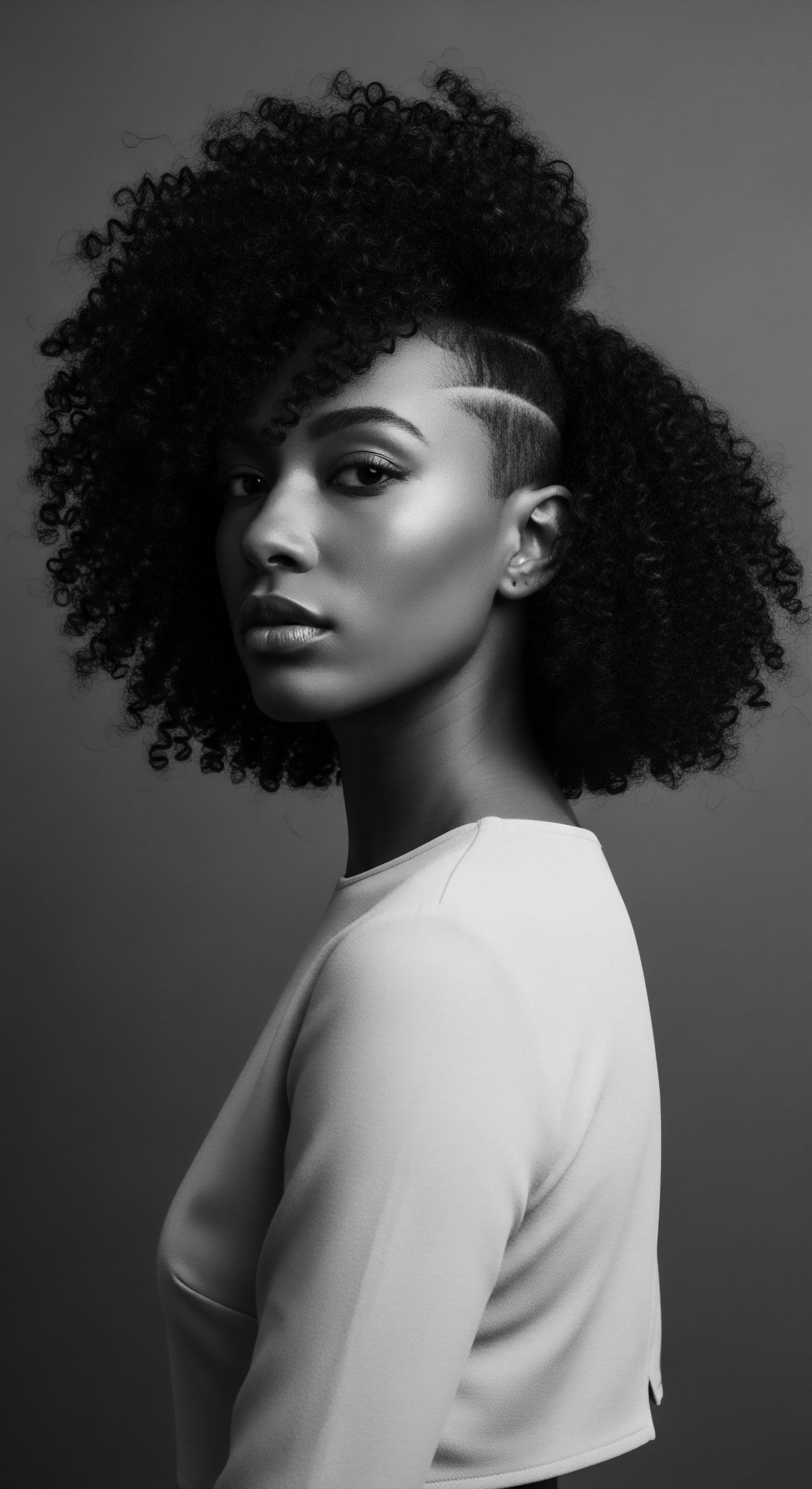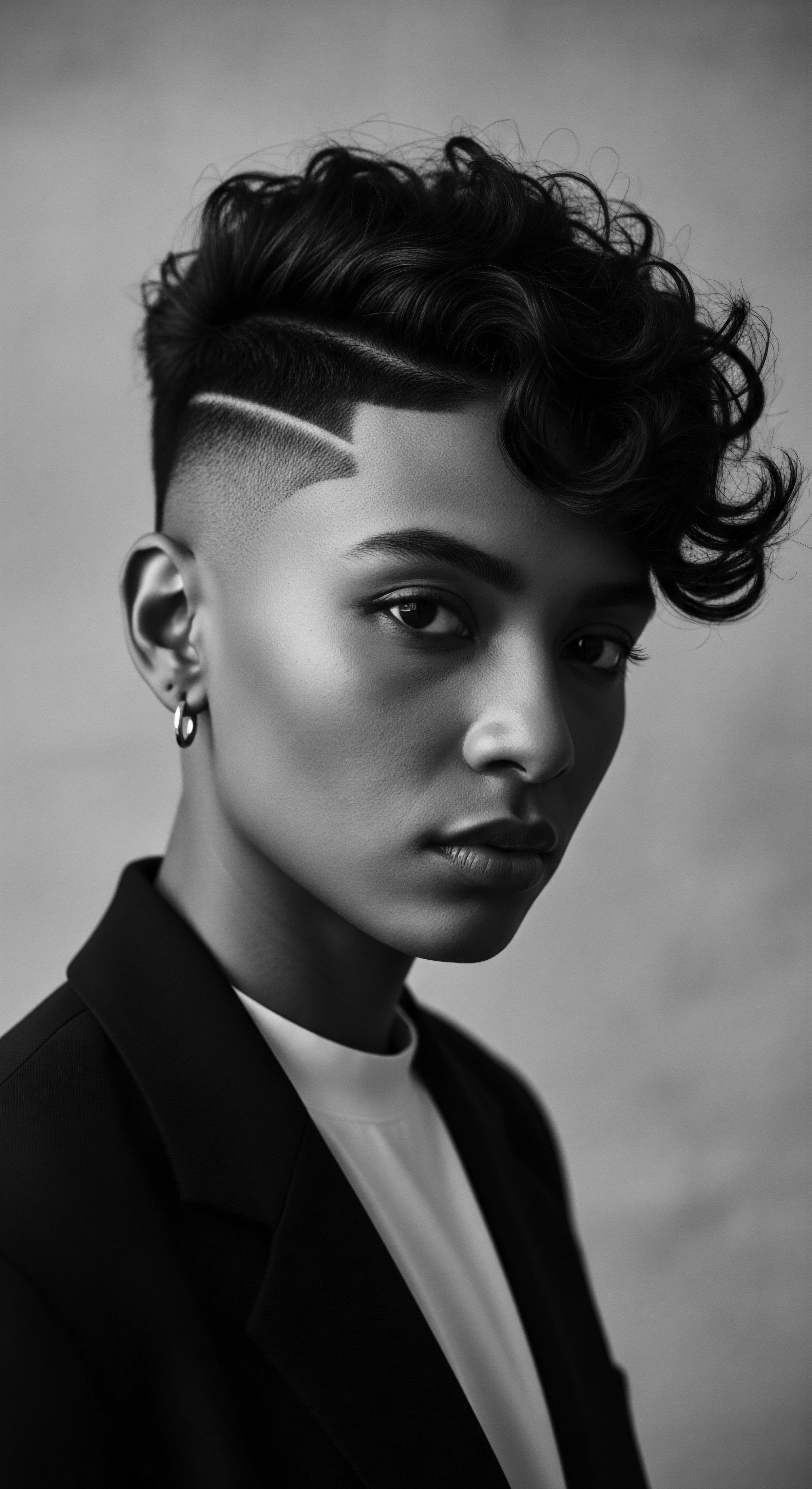
Roots
For those who have lived the textured hair experience, or stood in quiet admiration of its enduring spirit, the question of its deeper legacy often surfaces ❉ What historical acts of resistance are tied to African hair styling? This is not a query about fleeting trends or superficial adornment. This inquiry extends an invitation to journey through the very fibers of being, to discern the ancestral whispers held within each coil, each strand, a living archive of defiance, ingenuity, and profound connection to heritage.
Our exploration traces the profound ways in which African hair styling, from its elemental biology to its most intricate cultural expressions, has stood as a beacon of opposition against erasure, a testament to the resilient spirit of Black and mixed-race peoples across generations. The story of African hair is inseparable from the narrative of resistance, a dialogue between ancestral wisdom and the relentless human will to claim identity amidst immense pressures.

Hair Anatomy and Its Ancestral Resonance
To comprehend the resistance embedded in African hair styling, one must first recognize the unique biological architecture of textured hair itself. Unlike its straighter counterparts, afro-textured hair emerges from the scalp in an elliptical or flattened cross-section, forming tight, spring-like coils. This particular shape, coupled with a higher concentration of disulfide bonds, results in a hair shaft that bends and twists, creating its characteristic volume and resilience. These biological realities, often pathologized by Eurocentric beauty standards, were not seen as deficiencies in traditional African societies.
Instead, they were the very canvas upon which identity, status, and spirituality were so vividly painted. Ancient African communities understood the inherent strength and versatility of these coils, honoring them through meticulous care and symbolic adornment. This foundational acceptance of hair’s natural form, prior to any imposed ideals, was an initial, unstated act of self-possession.
Centuries before the transatlantic slave trade, the hair of African peoples served as a profound communicator. A person’s hairstyle could instantly convey their marital status, age, wealth, tribal affiliation, and even their religious beliefs. This deep societal integration of hair meant its care was not merely cosmetic but a communal ritual, often performed by close relatives, strengthening familial bonds and transmitting cultural knowledge. The distinct classifications of textured hair, as understood within these ancestral frameworks, celebrated every curl and kink as a mark of lineage and belonging.
African hair styling has long served as a profound historical act of resistance, preserving identity and heritage against forces of oppression.

Shaving as a Tool of Erasure
The systematic oppression of enslaved Africans began, often, with the brutal act of shaving their heads upon capture and arrival in the Americas. This was a calculated and deeply dehumanizing practice, severing individuals from their visual markers of identity and community, a violent attempt to strip them of their heritage and dismantle their sense of self. The very act aimed to erase the intricate stories and social hierarchies embedded in their hair, rendering them nameless and stripped of their past. Yet, even in this enforced uniformity, the memory of what was lost became a silent, simmering spark of defiance.
During the transatlantic slave trade, when millions of Africans were forcibly removed from their homelands, hair became a silent battleground. The colonial powers and slave owners, observing the immense cultural value placed on hair, sought to weaponize this reverence. They often maligned textured hair as “dirty” or “unprofessional,” a stark contrast to the straight, “good hair” idealized in Eurocentric standards.
This deliberate denigration was a psychological assault, intended to break the spirit and undermine the intrinsic worth of African identity. The resilience of those who, against all odds, sought to maintain or reclaim aspects of their hair traditions in the face of such hostility speaks to a foundational act of resistance.

Ritual
The ritual of hair styling among African peoples, particularly under the crushing weight of oppression, evolved into complex acts of survival and quiet defiance. Amidst the dehumanizing conditions of slavery, maintaining any semblance of traditional hair care was a monumental undertaking, yet it continued, albeit in clandestine forms. These practices, once open community gatherings, transformed into whispered lessons and hidden moments of connection, reaffirming a heritage that sought to be extinguished. The very act of caring for one’s textured hair became a subversive ritual, a reclamation of personhood.

Cornrows as Coded Cartography
One of the most powerful and storied acts of resistance tied to African hair styling lies in the use of cornrows as hidden maps and communication networks during periods of enslavement. Enslaved women, with remarkable ingenuity, braided intricate patterns into their hair that mimicked the roads and pathways of escape routes. The tightness, direction, and specific designs of these braids could signal rendezvous points, safe houses, or even the topography of the land, providing crucial information for those seeking freedom. This practice was particularly notable in regions like Colombia, where communities of maroons, led by figures such as Benkos Biohó, utilized these hair designs to coordinate escapes to liberated villages like Palenque de San Basilio in the 17th century.
These braided maps were not merely symbolic. They were practical guides, often concealing small, vital resources within the plaits themselves. Enslaved women would hide rice seeds, gold nuggets, or even small tools within their tightly woven braids, ensuring sustenance and provisions for the perilous journey to freedom. This intertwining of practical survival with profound cultural expression stands as a testament to the depth of human spirit and the intrinsic link between hair and heritage.
| Historical Period Pre-colonial Africa |
| Hair Styling Act of Resistance Diverse styles signifying social status, tribe, and spiritual beliefs. |
| Significance to Heritage Affirmation of individual and collective identity, rich cultural lexicon. |
| Historical Period Transatlantic Slave Trade |
| Hair Styling Act of Resistance Cornrows as hidden maps and carriers of seeds/gold for escape. |
| Significance to Heritage Survival, coded communication, preservation of ancestral knowledge. |
| Historical Period 18th Century Louisiana |
| Hair Styling Act of Resistance Adorned headwraps in defiance of the Tignon Laws. |
| Significance to Heritage Reclamation of dignity, beauty, and cultural expression amidst forced conformity. |
| Historical Period Mid-20th Century (Civil Rights) |
| Hair Styling Act of Resistance The Afro as a statement of Black Power and pride. |
| Significance to Heritage Rejection of Eurocentric beauty norms, assertion of self-love and racial solidarity. |
| Historical Period Hair has consistently served as a canvas for resistance, adapting its forms across historical epochs to safeguard identity and spirit. |

Tignon Laws and Their Subversion
The resistance woven into hair extended beyond the perilous journeys of escape. In 18th-century Louisiana, the infamous Tignon Laws, enacted in 1786, mandated that free Black women and women of color cover their hair with a tignon (a scarf or headwrap) when in public. This law sought to suppress the elaborate, often artful hairstyles worn by these women, which were seen as a threat to the established racial hierarchy and a challenge to white women’s social status.
Far from achieving its intended effect of diminishing their presence, these women transformed the symbol of oppression into an act of exquisite rebellion. They adorned their headwraps with vibrant fabrics, jewels, and intricate folding techniques, turning a badge of supposed inferiority into a statement of unparalleled style, dignity, and cultural pride. This transformation was a powerful, public declaration of self-definition, a subtle yet profound subversion of a law designed to strip them of their visible worth. It speaks to the incredible human capacity to find beauty and agency even within the confines of tyranny, a testament to an unyielding spirit.
Hidden within cornrows, seeds and escape routes offered tangible pathways to liberation, while adorned headwraps spoke volumes of an unbroken spirit.

Relay
The legacy of resistance in African hair styling continues its relay across generations, adapting its forms but never relinquishing its core purpose ❉ the assertion of self and heritage in the face of systemic pressures. The mid-20th century witnessed a significant resurgence of this dynamic, as the collective consciousness of Black peoples in the diaspora sought to reclaim what had been lost, redefine what was considered beautiful, and challenge the ingrained discriminatory norms.

The Afro ❉ A Crown of Liberation
The Civil Rights Movement and the Black Power Movement of the 1960s and 1970s brought forth one of the most iconic acts of hair-based resistance ❉ the Afro. This voluminous, spherical style became a powerful symbol of defiance against Eurocentric beauty standards that had long dictated that straight hair was the ideal. For decades, Black individuals had often felt compelled to chemically straighten their hair or conceal their natural texture to achieve social acceptance or employment opportunities. The Afro directly challenged this paradigm, advocating for an unapologetic embrace of one’s natural texture and heritage.
Prominent figures such as Angela Davis and members of the Black Panther Party sported the Afro as a visible declaration of Black pride, power, and solidarity. It was a rejection of forced assimilation and an affirmation of the inherent beauty of Afrocentric features. The movement encouraged self-love and community unity, using hair as a public, tangible manifestation of political and cultural awakening. The widespread adoption of the Afro, particularly among young Black men and women, marked a profound shift in self-perception and collective identity, demonstrating a deep refusal to conform.
- Cornrows ❉ Historically used as covert maps for escape routes and to conceal seeds or gold during enslavement.
- Headwraps ❉ Transformed from symbols of imposed inferiority under Tignon Laws into expressions of resistance, dignity, and cultural artistry.
- Afro ❉ An icon of the Civil Rights and Black Power movements, it publicly rejected Eurocentric beauty norms and asserted Black pride.

Legal Battles and the Struggle for Hair Freedom
The fight for the right to wear natural hair styles continued beyond the social movements of the 20th century, entering legal arenas. The resistance against hair discrimination is ongoing, manifesting in legislative efforts such as the CROWN Act, which aims to prohibit discrimination based on hair texture and protective hairstyles associated with race. This legislation acknowledges that societal perceptions of Black hair continue to impact employment and educational opportunities. The historical pressure to conform to Eurocentric hair standards has led to enduring challenges, where natural styles like braids and locs are sometimes deemed “unprofessional”.
Consider the case of the 1981 lawsuit against American Airlines, where a Black woman challenged a company policy regarding braids. The court initially sided with the airline, reasoning that braids were not an immutable racial characteristic, unlike the Afro. This instance underscored the deep-seated biases and the ongoing struggle for legal protection for diverse Black hairstyles. The continued advocacy for laws that protect hair choice represents a contemporary act of resistance, building upon the foundational struggles of previous generations to ensure that the beauty of textured hair is celebrated without penalty.

How Have Technological Advancements Shaped the Modern Expression of Hair Resistance?
The digital age, with its interconnectedness, has profoundly impacted how acts of hair resistance are expressed and sustained. Social media platforms have become powerful conduits for the modern natural hair movement, allowing Black women globally to share their hair journeys, exchange knowledge of ancestral care rituals, and collectively challenge prevailing beauty standards. This virtual community provides a vital space for affirmation and empowerment, often validating traditional practices with contemporary scientific understanding.
Films and documentaries, too, play a significant role, tracing the history and politics of natural Black hair, raising consciousness, and reinforcing the idea of hair as a sacred means of expression and liberation. This collective narrative, amplified by digital reach, ensures that the spirit of hair resistance continues its relay, connecting past struggles with present triumphs.
The journey of textured hair reveals a continuous interplay of cultural legacy and biological uniqueness, defying reductive definitions.

Reflection
As we close this chapter on the historical acts of resistance tied to African hair styling, we are left with a resonant truth ❉ textured hair is not merely a biological attribute; it is a profound repository of heritage, a living testament to the human spirit’s enduring quest for self-determination. From the coded cornrows that charted pathways to freedom through the Colombian forests, to the adorned headwraps that spoke volumes of dignity in the face of oppressive laws, and the Afro that declared Blackness as beautiful and powerful across America, hair has consistently served as a canvas for defiance.
The echoes of these ancestral acts reverberate today in every decision to wear one’s hair in its natural state, in every protective style chosen, in every strand honored with conscious care. It is a dialogue with history, a quiet affirmation of lineage, and a vibrant declaration for the future. The Soul of a Strand ethos, which guides our understanding, finds its deepest expression in this legacy.
It reminds us that each coil, each twist, carries stories of survival, creativity, and an unbreakable connection to roots that run deep through time. This heritage is not static; it is a dynamic, living library, constantly evolving yet forever rooted in the wisdom of those who came before, reminding us that true beauty lies in authenticity and the strength to stand unbound.

References
- Byrd, A. D. & Tharps, L. L. (2014). Hair Story ❉ Untangling the Roots of Black Hair in America. St. Martin’s Griffin.
- Patton, T. O. (2012). Hey Girl, Am I More Than My Hair? African American Women and Their Hair. Journal of Black Studies, 43(4), 481-495.
- Omotos, A. (2018). The Cultural and Spiritual Significance of Hair in Ancient African Civilizations. Journal of Pan African Studies, 11(3), 105-115.
- Norwood, C. R. (2018). Black Feminist Thought ❉ Knowledge, Consciousness, and the Politics of Empowerment. Routledge.
- Tadele, T. G. (2020). Hair as a Form of Resistance and Identity Assertion in African American Women. Honors Theses, University of Maine.
- Gordon, M. (2013). Hair and Resistance. In The Oxford Handbook of African American Slavery. Oxford University Press.
- Bhuttacharji, H. (1936). Women of North Africa. The Labour Woman, 24(6), 87.
